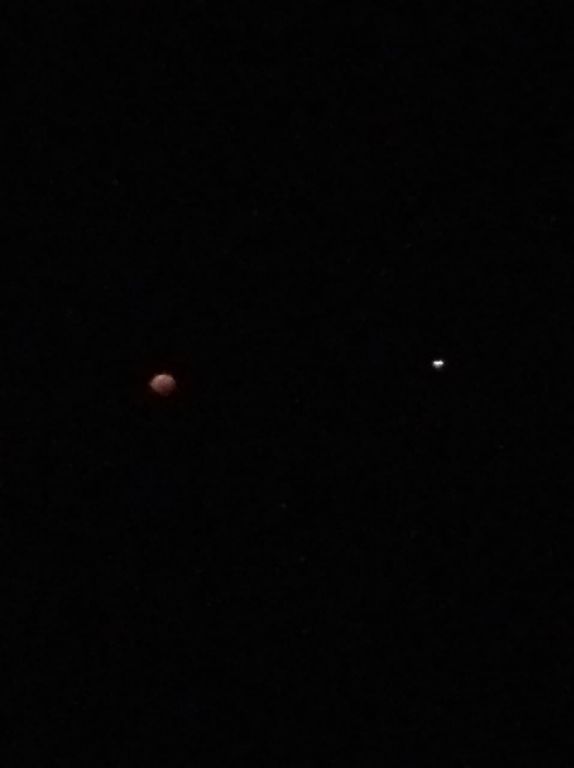 You are not logged in to Prodigits. Please register or login.
You are not logged in to Prodigits. Please register or login. You are not logged in to Prodigits. Please register or login.
You are not logged in to Prodigits. Please register or login.
Subject: Space Watch




seifer 27.07.18 - 08:45pm
What exactly is that large star next to the moon? Is it Mars or just a large star like Sirius, etc?? Someone must know here. * +
bambi99 27.07.18 - 09:06pm
I'd guess it's too big in relation to the moon to be a planet 
I'm gutted we have cloud cover  * +
* +
seifer 27.07.18 - 09:09pm
I give up 

At least here you can see it's red. * +
usb3.1 27.07.18 - 10:33pm
I wanted to get a pic in the UK but clouds made it impossible * +
crail 27.07.18 - 10:36pm
I think it Saturn, or mars * +
obi_jon 12.08.18 - 09:23am
 Set your controls for the heart of the sun.
Set your controls for the heart of the sun.
The Delta IV heavy rocket carrying the Parker Solar Probe just successfully blasted off from Cape Canaveral. During it's mission to orbit and study the Sun, the probe will travel closer to oiur parent star than any man made object has ever been, actually passing through the outer edges of the suns coronal field at ~4million miles, the spacecraft is also expected to become the fastest travelling man made object ever, as it will be accelerated to immense speeds by the huge gravitational forces of the most massive object in the solar system, the sun itself.
 * +
* +
shadow27 12.08.18 - 12:55pm
 Set your controls for the heart of the sun.
Set your controls for the heart of the sun.

''The spacecraft trajectory will include seven Venus flybys over nearly seven years to gradually shrink its elliptical orbit around the Sun, for a total of 24 orbits. The science phase will take place during those 7 years, focusing on the periods when the spacecraft is closest to the Sun.''
Interesting.. * +




+ go to page 1-632
+ my page
+ functions
3 search
6 first page
7 last page
+ bookmark
8 General Chat Forum
9 Forum Index
